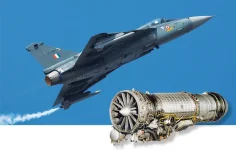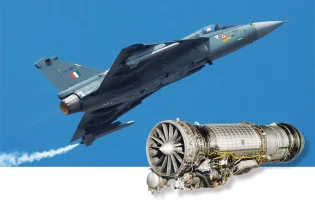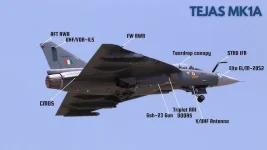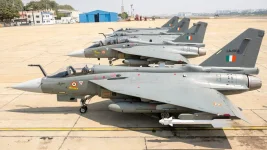- Views: 2K
- Replies: 11
The Indian Air Force (IAF) is on the verge of a major technological leap that promises to fundamentally alter the balance of air power in South Asia.
The planned integration of the domestically developed Astra Mk3 'Gandiva' and the European Meteor long-range missiles onto the indigenous Tejas Mk1A and upcoming Tejas Mk2 fighter jets will provide India with an unprecedented aerial advantage.
This strategic enhancement, confirmed by Hindustan Aeronautics Limited (HAL), equips the IAF with the ability to engage hostile aircraft from well beyond the range of missiles currently held by neighbouring air forces.
This capability could compel the Pakistan Air Force (PAF) into a defensive posture, potentially requiring its aircraft to patrol as far as 200 kilometres inside their own borders to avoid engagement.
Such a retreat would severely test Pakistan's limited strategic depth, leaving critical military installations and airbases vulnerable to IAF strikes.
India's Homegrown Power: The Gandiva Missile
At the heart of this new capability is the Astra Mk3, recently christened "Gandiva," an advanced beyond-visual-range air-to-air missile (BVRAAM) developed by India's Defence Research and Development Organisation (DRDO).Powered by a state-of-the-art solid fuel ducted ramjet (SFDR) engine, the Gandiva can travel at speeds of Mach 4.5 and strike targets up to 340 kilometres away. This range significantly surpasses that of China's PL-15 (200–300 km) and the American AIM-120D AMRAAM (120–160 km).
Its advanced guidance system and electronic counter-measure resistance make it a lethal weapon against high-value assets such as fighter jets, airborne warning and control systems (AWACS), and mid-air refuelling aircraft.
The Proven Meteor Advantage
Complementing the Gandiva is the MBDA Meteor missile, already a proven asset on the IAF’s Rafale fighters.Widely regarded as one of the most effective air-to-air missiles globally, the Meteor has a range exceeding 200 kilometres and also uses a ramjet propulsion system. This allows it to maintain high speeds throughout its flight, creating a vast "no-escape zone" for its targets.
HAL has confirmed that the Meteor will be integrated onto the Tejas Mk1A, starting with the 41st aircraft which will feature the indigenous Uttam AESA radar, and will be a standard feature on the future Tejas Mk2.
Tejas: The Platforms for Dominance
The platforms carrying these powerful missiles are becoming the backbone of the IAF's fleet.The Tejas Mk1A is a versatile 4.5-generation fighter equipped with the advanced Uttam Active Electronically Scanned Array (AESA) radar, capable of tracking multiple targets at long distances.
The IAF initially ordered 83 of these jets and has received approval to procure an additional 97, demonstrating its confidence in the platform.
Looking ahead, the Tejas Mk2 will be a larger and more powerful medium-weight fighter, designed to replace ageing fleets of Mirage 2000, MiG-29, and Jaguar aircraft by 2030.
With a more powerful General Electric F414 engine and a greater payload capacity of 6.5 tonnes, the Mk2 will be able to fully exploit the extreme ranges of the Gandiva and Meteor missiles, cementing its role as a premier air superiority fighter.
A Strategic Dilemma for Pakistan
The combination of these advanced missiles and modern fighter jets poses a significant challenge to the Pakistan Air Force.The PAF's most capable aircraft, the JF-17 Block III and J-10CE, are armed with the PL-15E missile, which has a reported range of around 145 kilometres.
Unlike the ramjet-powered Gandiva and Meteor, the PL-15E relies on a traditional rocket motor, which loses energy in the final phase of flight.
This technological gap forces a difficult choice upon the PAF: either risk engaging IAF jets at a severe disadvantage or pull its air patrols deep within its own territory.
As analysts have pointed out, retreating 200 kilometres to stay safe from the IAF's new missiles would expose vital airbases like Sargodha and Jacobabad, along with other key army installations, to potential strikes with little warning.





